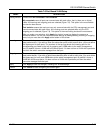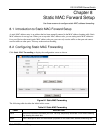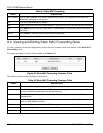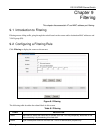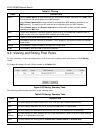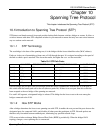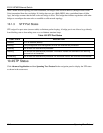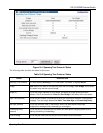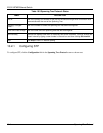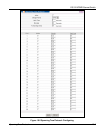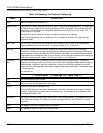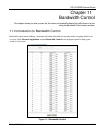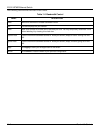
ES-3124PWR Ethernet Switch
Spanning Tree Protocol 10-1
This chapter introduces the Spanning Tree Protocol (STP).
10.1 Introduction to Spanning Tree Protocol (STP)
STP detects and breaks network loops and provides backup links between switches, bridges or routers. It allows a
switch to interact with other STP-compliant switches in your network to ensure that only one route exists between
any two stations on the network.
10.1.1 STP Terminology
The root bridge is the base of the spanning tree; it is the bridge with the lowest identifier value (MAC address).
Path cost is the cost of transmitting a frame onto a LAN through that port. It is assigned according to the speed of
the link to which a port is attached. The slower the media, the higher the cost - see the next table.
Table 10-1 STP Path Costs
LINK SPEED RECOMMENDED VALUE RECOMMENDED RANGE ALLOWED RANGE
Path Cost 4Mbps 250 100 to 1000 1 to 65535
Path Cost 10Mbps 100 50 to 600 1 to 65535
Path Cost 16Mbps 62 40 to 400 1 to 65535
Path Cost 100Mbps 19 10 to 60 1 to 65535
Path Cost 1Gbps 4 3 to 10 1 to 65535
Path Cost 10Gbps 2 1 to 5 1 to 65535
On each bridge, the root port is the port through which this bridge communicates with the root. It is the port on
this switch with the lowest path cost to the root (the root path cost). If there is no root port, then this switch has
been accepted as the root bridge of the spanning tree network.
For each LAN segment, a designated bridge is selected. This bridge has the lowest cost to the root among the
bridges connected to the LAN.
10.1.2 How STP Works
After a bridge determines the lowest cost-spanning tree with STP, it enables the root port and the ports that are the
designated ports for connected LANs, and disables all other ports that participate in STP. Network packets are
therefore only forwarded between enabled ports, eliminating any possible network loops.
STP-aware switches exchange Bridge Protocol Data Units (BPDUs) periodically. When the bridged LAN
topology changes, a new spanning tree is constructed.
Chapter 10
Spanning Tree Protocol



